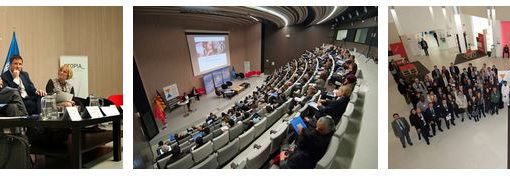Water and Sanitation, Politics and Power
Walking several kilometres to the nearest toilet; dodging snakes, elephants and sexual advances on the way; drinking murky water from open ponds just because they are closer; ignored/snubbed/harassed by authorities meant to fix the situation…. We are all-too-familiar with these images and stories. We come across them on the television, on computer screens and in newspapers, when the mainstream media decides to visit these people and places once in a while.
What makes the videos below different from, say, news reports broadcast on your local/international news network to mark World Water Day? These videos capture the same stories but have been shot, edited and brought to you by the very people who have to live with little water and distant toilets day-in and day-out. The videos also highlights the role that todays’ easy to handle user friendly smart cameras can help in bringing out stories from any corner of the world much more in real time, adding to value to the overall role and usage of ICT in governance. Further, the videos don’t end at highlighting the problem, they become integral tools in bring change to the communities.
Example: “I request all our viewers to call Mr. Bishwanath Samantara, Engineer at our local Water and Sanitation Department on his mobile number 98******** and pressurize him so that residents of Themra village could get more sources of drinking water in their village,” says Abhishek Das as he signs off his story about the 1000 members of his community struggling with the one tubewell they have access to.
These communities, located in western and eastern India, are not trapped in arid environments. There are plenty of water resources that can be developed and tapped for their benefit. These stories reveal that a key barrier to accessing water and sanitation facilities is the lack of accountable, transparent and equitable processes and creeping corruption. At times, it manifests as apathy of government officials and elected representatives. Sometimes it’s a case of class/caste-based discrimination. Often, it is plain greed at play as evidenced by siphoned public funds and demands of bribe.
How do we solve this problem? And who should? At the moment, there are more questions than answers, most of which lie within the realms of politics and power. But a start can be made by letting those that matter the most be heard, through their own stories and not someone else’s.
A bit on the WIN-VV collaboration:
The Water Integrity Network (WIN) started working with Video Volunteers (VV) in 2011 by collaborating on two videos on corruption in water and by jointly presenting in two major events, the WSSCC Global Forum on Hygiene and Sanitation (October 2011, India) and the 15th International Anti-Corruption Conference (November 2012, Brazil) with the aim to highlight the role of participatory video for improved water integrity. The partnership continues in 2013, with 11 videos produced on Water Integrity, Corruption and Governance along with presenting together in the Seminar on ICT to Improve Water Governance in the World Water Week (September 2013, Sweden).
These stories have been brought to you by Video Volunteers and the Water Integrity Network. For more about their collaborative effort, visit http://www.waterintegritynetwork.net/audio-visual/video
Drinking water shortage in Themra village
Themra village (Kalahandi district) in India suffer from acute shortage of drinking water, on account of inadequate supply systems suffering from apathy of the designated government authorities. The amount of water these systems can supply is way less than what the 1000 residents need.
Bypased by government sanitation schemes
Akshaya Sethi from Karthuta pvillage (Jagatsingpur district, India) lives below the official poverty line and is therefore entitled to support from the local government for building a latrine for his family. However, like 100 other ‘poor’ families in his village, he has been bypassed by the scheme and his family members continue to have a hard time meeting their sanitation needs with minimum dignity. This is especially difficult for women, and especially difficult during the rainy season.
Lack of toilets, lack of hygiene, loss of dignity
300 people living in a residential block within an urban area in western India (Limbdi, Gujarat state) lack access to toilets close to their home. And this is something they are entitled to, under a government scheme. Nevertheless, they are forced to walk long distances to the closest public toilets, where they face various forms of abuse from anti-social elements. Apart from the inconvenience and the loss of dignity, this has led to a number of diseases within this community.
These people have organized themselves and demonstrated in front of civic authorities. But that wasn’t sufficient; their situation has not improved the least bit.
Sanitation: Government apathy in Padamkesharipur village
In an all-too-familiar story, a 2000-member rural community in Padmakesharipur village (Orissa state, India) lacks access to basic sanitation. They are forced to relieve themselves in the open, in ways that are inconvenient, unhygienic and undignified.
There isn’t a lack of government schemes and grievance redressal mechanisms. Its just that they don’t work. Over the years, the villagers have made several complaints to local politicians and public officials and have been promised proper action each time. But nothing has been done so far.
Rural drinking water system: Lack of accountability of public engineers
In Padamkesharipur village in India, people have to walk 3 kilometres just to fetch drinking water for their daily needs. Those who can’t make the trip use local non-improved sources such as open ponds/ditches. There are public systems there that do not work. It is the responsibility of government engineers to fix them and oversee their upkeep. The residents have complained and petitioned them— and higher authorities—but to no avail.
{jcomments on}


